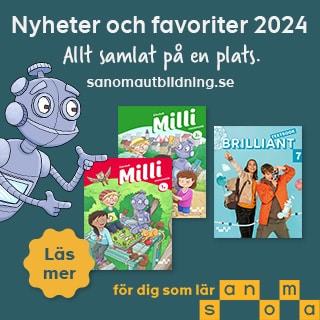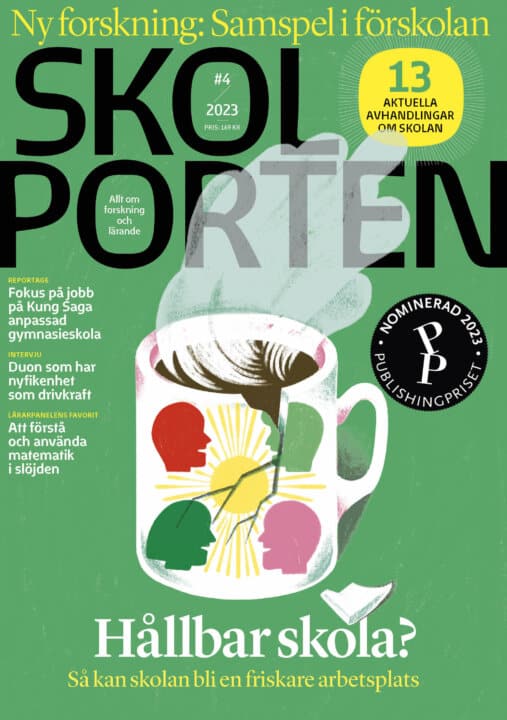Modularization of the learning architecture: supporting learning theories by learning technologies
Fredrik Paulsson har undersökt hur man kan bygga tekniska lösningar på ett sätt som gör att de blir anpassningsbara utifrån olika pedagogiska scenarion. Avhandlingen visar att genom att skapa en modulär teknisk miljö (ett exempel på detta är plocka ihop ett antal olika moduler för att skapa den lärmiljö man behöver, istället för att använda sig av statiska lärplattformar) kan tekniken ge stöd åt olika pedagogiska metoder – såväl som öka flexibiliteten.
Fredrik Paulsson
Professor Yngve Sundblad (huvudhandledare) samt Amjörn Naeve ((biträdande handledare)
Ass. Professor Miguel Angel-Cecilia, Dept. of Computer Science, Spain
KTH – Kungl Tekniska högskolan
2008-05-20
Modularization of the learning architecture: supporting learning theories by learning technologies
Institutionen för Numerisk analys och datalogi
Modularization of the learning architecture: supporting learning theories by learning technologies
This thesis explores the role of modularity for achieving a better adaptation of learning technology to pedagogical requirements. In order to examine the interrelations that occur between pedagogy and computer science, a theoretical framework rooted in both fields is applied.
During the twentieth century, the focus of pedagogical research and practice has gone from behaviourism, via cognitivism, to learning theory based on constructivism. Changes in learning objectives and an increasing cognitive complexity of learning tasks are likely to have contributed to this evolvement. This puts new requirements on the design and implementation of pedagogical instruction (instructional design) and its application to learning technology. Using instructional design together with technology requires the pedagogical process to be predetermined, which is partly contradicted by the nature of constructivism. Many constructivist approaches require social interaction and dynamic learning environments that can adapt to changes that are required by different pedagogical approaches. Those requirements have been met using modular approaches for content, i.e., learning objects, implemented in non-modular web-based virtual learning environments (VLE), like learning management systems (LMS).
This thesis argues that modularity promotes adaptability and adaptivity, but that the current practice of using learning objects and LMSes is too restricted to fulfill the increasing needs for flexibility. The reasons are that the learning object concept is still too ill-defined to function as a component framework, and there are complex and unsolved issues regarding the representation of pedagogical instructions. This is especially complicated from a constructivist perspective where pedagogical instructions cannot always be assumed to be predetermined, which needs to be encountered for by technology.
This thesis contributes to the research field by suggesting a modular approach that includes both digital learning content and VLEs. This was accomplished by suggesting a taxonomy and an abstract model for learning objects, which address both functional and technical properties. Furthermore, six action areas are suggested in order to enhance the technical quality of learning objects.
Using the abstract model as a basis, the software architecture of learning objects was addressed in order to separate data, logics and presentation including the separation of the representation of pedagogical process from the components that implement it. This facilitates the combination of modularity and representation of pedagogical instruction that utilizes machine-processable semantics, enabling the utilization of modularity at composition time as well as at run-time. This approach has resulted in a SOA-based architecture framework that has been used as blueprint for implementing two prototypes of modular VLEs, using different technology platforms. The objective was to verify the taxonomy, the abstract model, and the architecture framework. The experiments have shown that it is possible to incorporate learning content and the VLE into the same modular framework in order to provide the flexibility needed for learning technology to better adapt to changing pedagogical requirements.
The experiments have also shown how pedagogical processes benefit from being represented using machine-processable semantics in being able to better utilize the flexibility offered by modularity in keeping the components of the VLE together by representing context and structure. This has been illustrated by adding semantic annotations that were used to dynamically connect pedagogical instruction to annotated learning objects, using machine-processable semantics.
Relaterade länkar

Undervisa i artificiell intelligens
 Gy–Vux
Gy–Vux 







